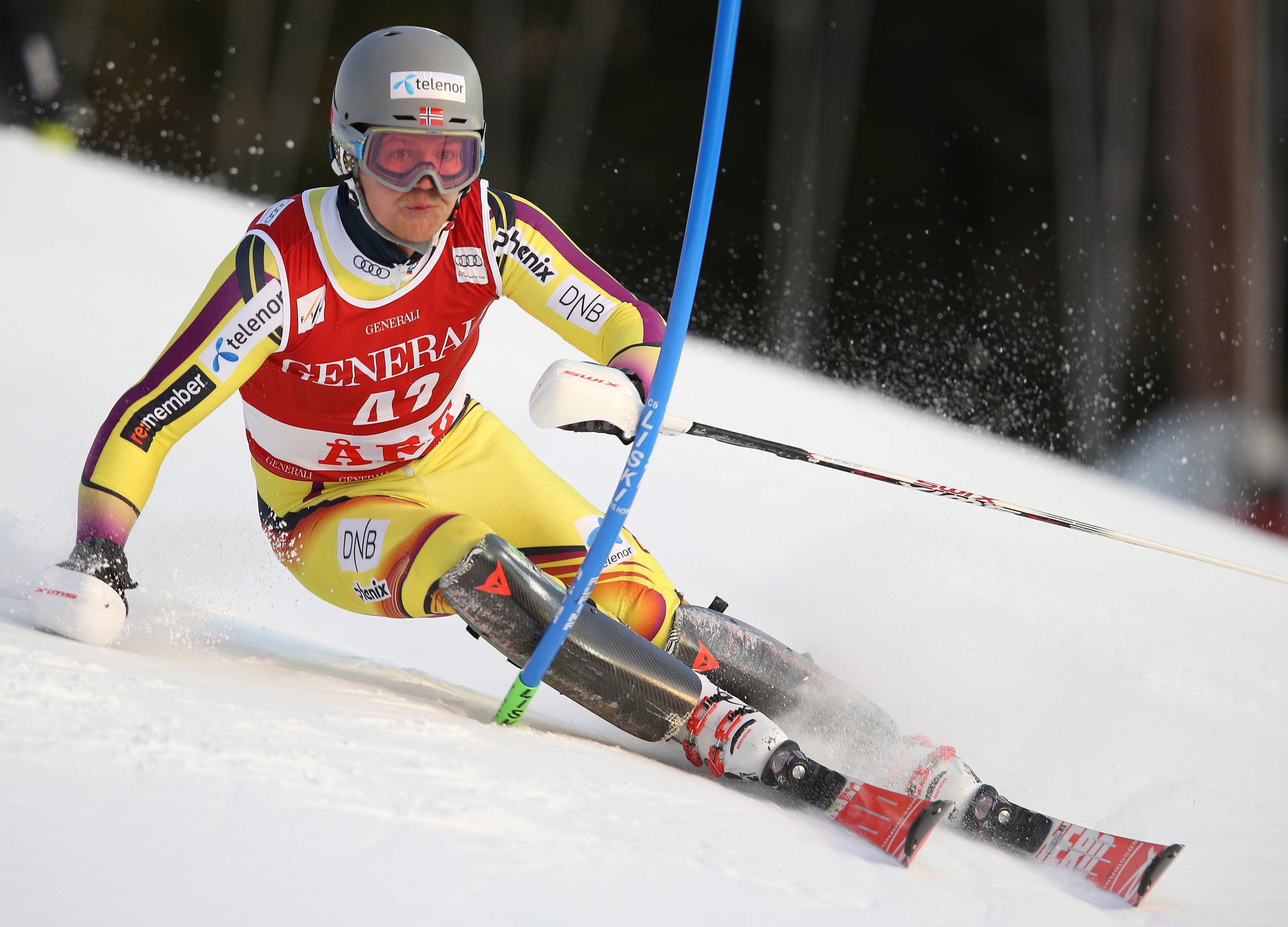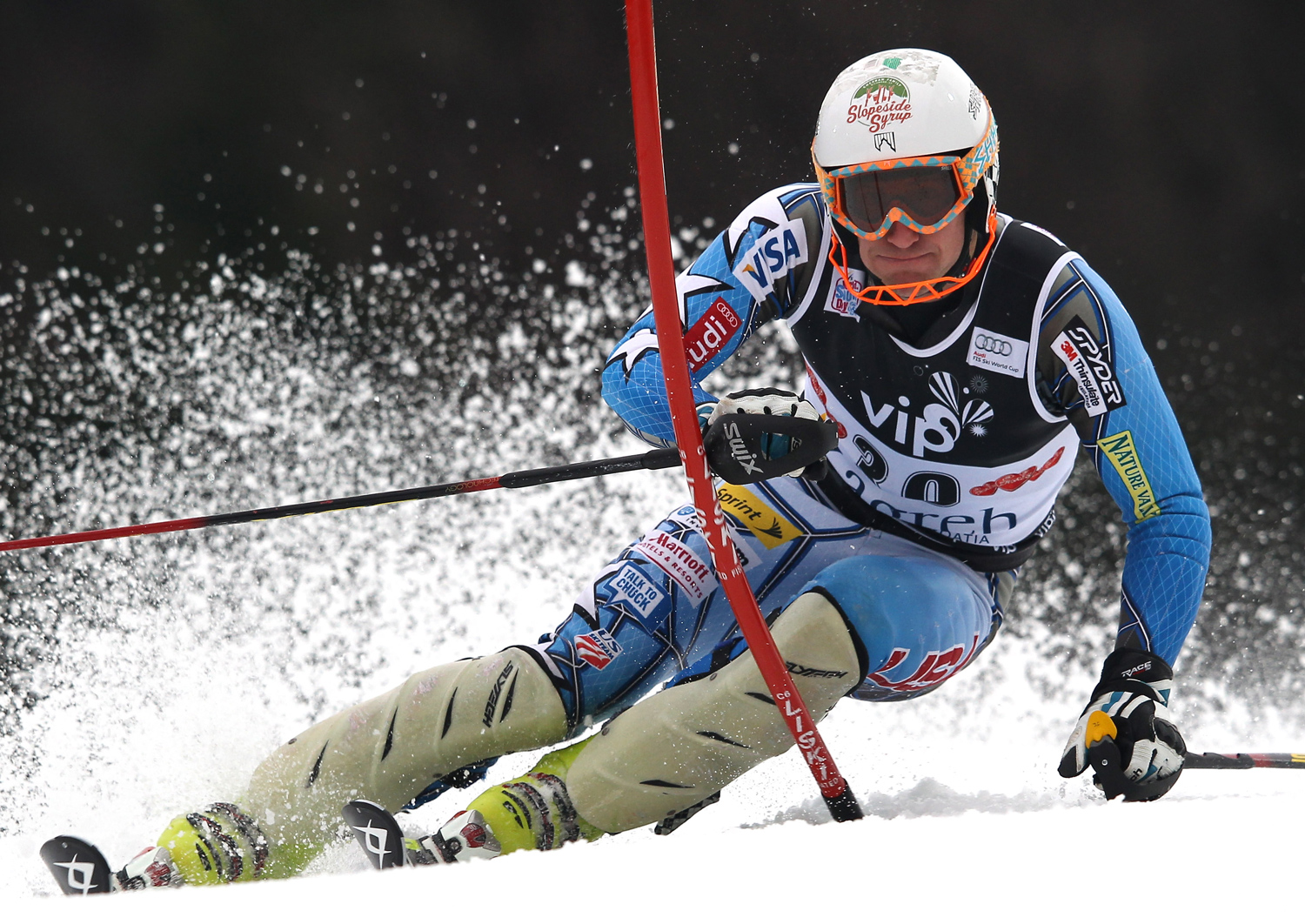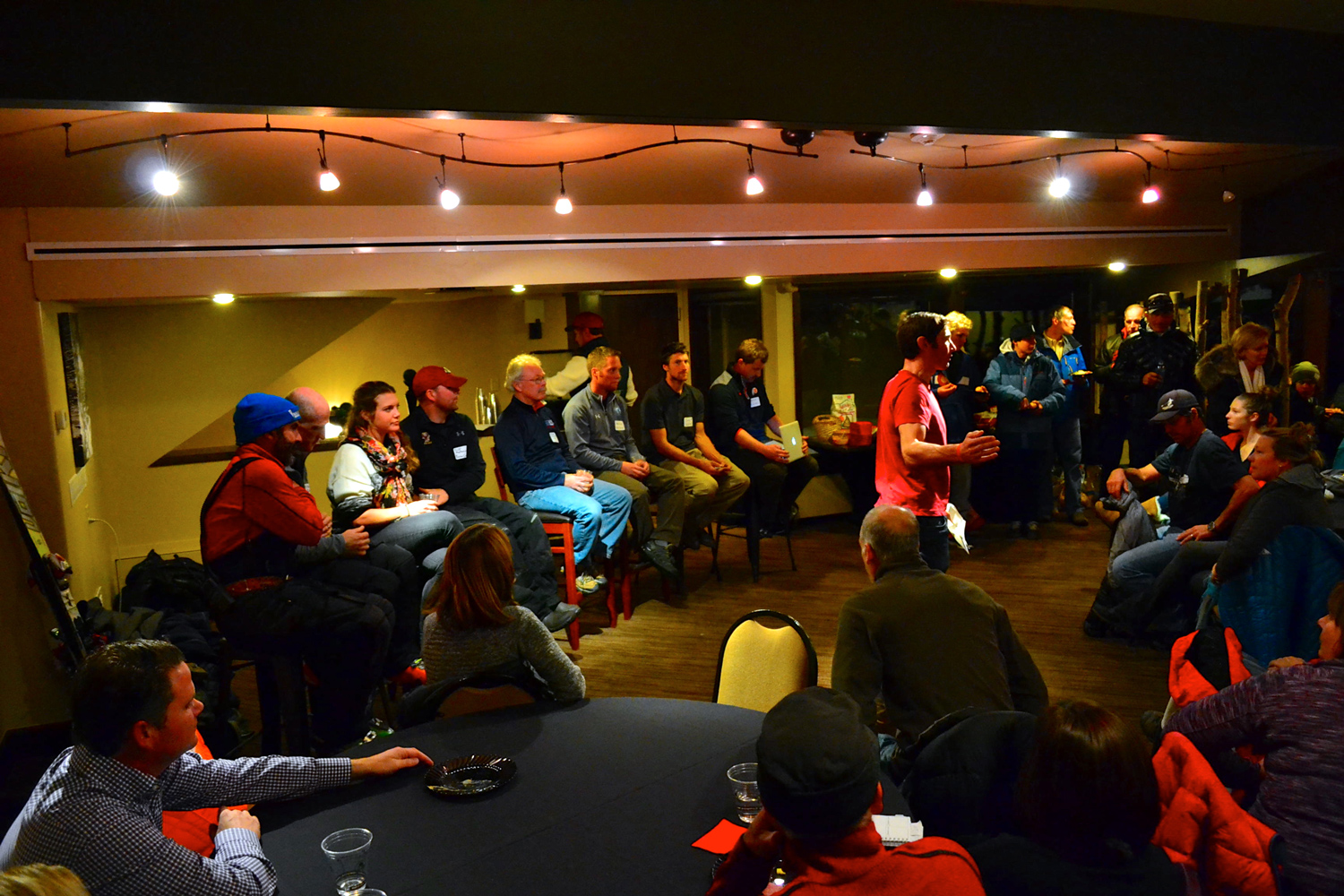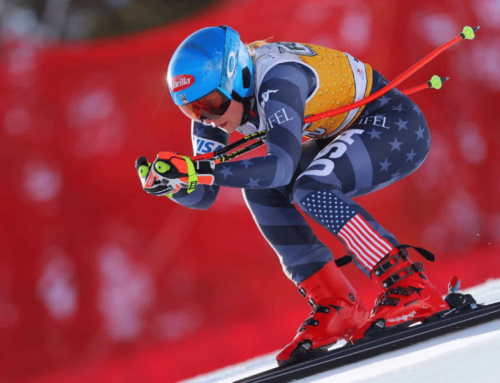How to Race Your Way into College
What NCAA alpine coaches want to tell you about getting into the right school
The Eastern college Carnival circuit is in full swing, as are the Western Invitationals, all careening toward NCAA Championships in Lake Placid, N.Y., this March. There’s another collegiate race under way as well: the scramble among high school alpine standouts to ski their way toward higher education. What’s the perfect application process? How can you be sure you’re putting your efforts toward your best chance of success?
Now, there may be some answers that haven’t always been so clear. It began back in November, as NCAA alpine programs from all around the country flooded Eagle and Summit Counties in Colorado for early-season training. Brandon Dyksterhouse, currently the athletic director at Ski & Snowboard Club Vail (SSCV) and an interim coach with the U.S. Ski Team, had what turned out to be a groundbreaking idea. Why not invite the coaches from these teams to an informal panel discussion one evening and bring prospective student-athletes and their parents to the presentation?
Dyksterhouse, himself an NCAA giant slalom champion and three-time All-American at the University of Vermont and then an assistant coach at the University of New Mexico, figured it would be best for the athletes and their parents to hear advice on the admissions process straight from the horses’ — or in this case, coaches’ — mouths. Gathering in the Manor Vail were families from not only SSCV but also Stratton Mountain School, Sugar Bowl Academy, and other teams.
And they received a hard dose of reality. As only 13 Eastern and eight Western schools field alpine teams that compete in NCAA races (with some of those colleges serving only as affiliate teams which are ineligible for post-season events), the competition for a spot on a roster in the preeminent collegiate skiing league in the world is fierce.
But not unattainable. Follow along for a foot in the door.
 DU’s Espen Lysdahl skis to a career best ninth-place finish at the 2014 Are World Cup while representing Norway. Credit: GEPA
DU’s Espen Lysdahl skis to a career best ninth-place finish at the 2014 Are World Cup while representing Norway. Credit: GEPA
Determine the Deadlines
“What are the things that are going to help your application have strength?” said Middlebury College Head Coach Stever Bartlett at the November meeting. “Each school is different. But there are a few things that are very general that are really important. The first thing is understanding the deadlines and the processes at each university or college.”
The easiest way to sort out the confusion over early decision and early action programs with deadlines in the fall or early winter; regular decision; and even early decision II options? Contact the coach, said Bartlett. “A lot of coaches will give that insight and some recommendations in terms of what makes sense,” he added.
Diversify
You can’t just be a ski racer. Admissions offices, said Bartlett, are looking for “diversity in interests” in the applications of student-athletes such as volunteer work, music, art, or even a part-time job. “It shows that you’ll bring other things to the campus community,” he said.
Since colleges are constantly seeking to increase the geographic and cultural diversity of their next admitted class, some international students may have more than just an athletic leg up on American skiers. Prospective student-athletes and parents are quick to point out the number of international athletes on each team’s roster, but some are high-level skiers who are simply using a system that was previously unavailable to Americans who sought to make the national team.
 Former World Cup racer Jimmy Cochran is now finishing his degree at UVM and serving as assistant coach of the alpine team there. Credit: GEPA
Former World Cup racer Jimmy Cochran is now finishing his degree at UVM and serving as assistant coach of the alpine team there. Credit: GEPA
Consider the Criteria
At the November meeting, USSA President and CEO Tiger Shaw recommended that our homegrown skiers study new opportunities in the changing dynamic of the U.S. Ski Team development pipeline.
“One of the things that I’m very interested in changing and adapting the Ski Team to is basically being completely agnostic to where athletes come from,” he said. “If you make criteria and you’re skiing fast, in terms of being invited to a camp, it doesn’t matter whether you’re at an academy or club, doing a PG year, not in school, taking time off, or actually enrolled in and competing on a college ski team. I’m completely open to someone competing for a D1 team and still being on the U.S. Ski Team. The Canadians have done it well and the Norwegians have done it well, and I’d love to see some Americans do that well.”
Study Scholarships
The NCAA coaches at the November meeting also dispelled some common misconceptions about financial aid. Firstly, despite the fact that all teams compete directly against each other in RMISA and EISA races, NCAA division and conference rules are different for each school. Division I powerhouses such as the defending national champion University of Denver Pioneers, the University of Colorado Buffaloes, and the University of Vermont Catamounts are scholarship granting to some degree. But no collegiate program in the U.S. is handing out the ever-elusive “full ride” (or full tuition scholarships) on a regular basis, even to international athletes who, many onlookers complain, constitute too large a proportion of Division I rosters.
“A way to compare it is go to the NCAA Division I track championships, and see where the national champion distance runners are from,” said UVM Director of Skiing Bill Reichelt. “They’re from Ethiopia and Kenya. It’s about winning national championship titles is what it comes down to.”
A Division I school is limited to offering a total of 7.0 female scholarships and 6.3 male scholarships for skiing, which are then divided between alpine and nordic squads.
“And some schools that offer scholarships may not even be fully funded to that,” Reichelt added. “For the University of Vermont, we don’t have full funding — close to it. We have to recruit and make offers to alpine and nordic skiers of each gender, and not everyone gets a full ride. Some will make the team and not get any money; some will get a partial. Not everyone is going to get a scholarship, and not everyone is going to get a full ride. You’ve got to try to find the best fit for your child.”
Of the eight male alpine athletes on UVM’s roster this season, four are from Vermont and a fifth, though Canadian, graduated from a Vermont high school. Half of the alpine athletes on the Division I team at the University of New Mexico are American this year; and at Montana State University, four of the five alpine men are from the U.S. The point? It can be quite misleading to focus solely on the rosters of the very top performers at NCAA Championships, an event that significantly limits teams in participation and hardly represents the full picture of NCAA skiing nationwide.
Tiger Shaw addresses the crowd of coaches, parents, and athletes to discuss the future of collegiate ski racing in America.
Three’s a Charm
Division III teams that frequently fall in the middle of those standings, such as Middlebury, Colby, and Williams, can’t even offer athletic-based scholarships regardless of how promising a skier may be, but academic scholarships and need-based financial aid are options to help ease the burden of funding a college education.
“You’d be amazed at how close some Division III schools can come with their financial aid, especially if you’re a very good student,” said St. Lawrence University Head Coach Willi Steinrotter. “You can definitely write your ticket that way. Some of the schools will fund everything during the year, be it the Thanksgiving camp, other FIS races, wax, lodging, and then some schools are restricted a little bit with budgets and what we can do. But everything’s covered at Carnivals.”
Be Flexible About Fit
With such tight competition for spots at the schools with a chance to win a national title, former U.S. Ski Team World Cup athlete and current UVM assistant coach Jimmy Cochran said it’s critical, now more than ever before, to make sure prospective student-athletes pick the right school based on their own needs and not on where a team finished in the rankings at last season’s NCAAs.
“There’s a school that fits each of you, and be really honest with yourself about that,” said Cochran. “It’s easy to say, ‘I really want to get into Dartmouth, and if I do, it’s going to define me.’ It’s not going to define you. You are who you are. Pick a school where you relate to the people, where you get that good feeling, and it just fits.”
University of Utah Head Coach Jaka Korencan pointed out that some of the current regulations for NCAA eligibility will be changing in 2016, specifically with regards to required high school coursework, so prospective students should keep and eye out for those in future years.
Prospective student-athletes, families, and coaches hoping to learn more about NCAA Division I Skiing are encouraged to visit the NCAA Eligibility Center.
 Ski Club Vail’s Brandon Dyksterhouse introduces the NCAA panel to parents and athletes at the Manor Vail in November.
Ski Club Vail’s Brandon Dyksterhouse introduces the NCAA panel to parents and athletes at the Manor Vail in November.





















